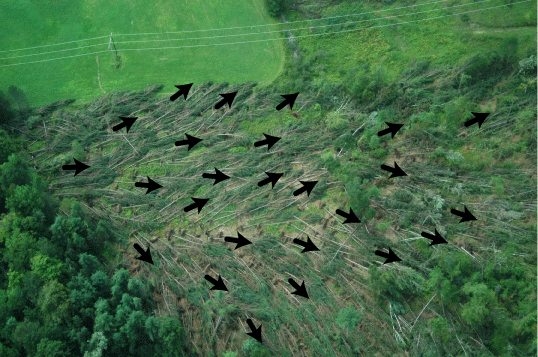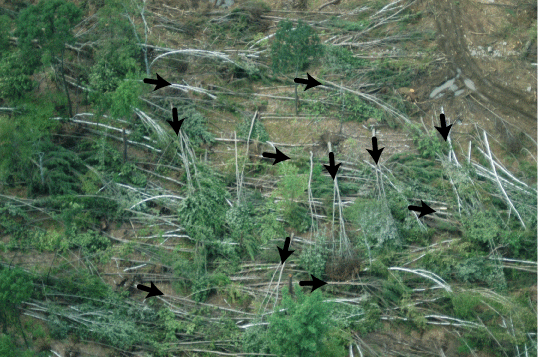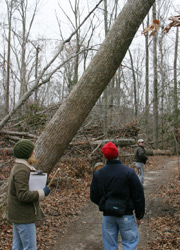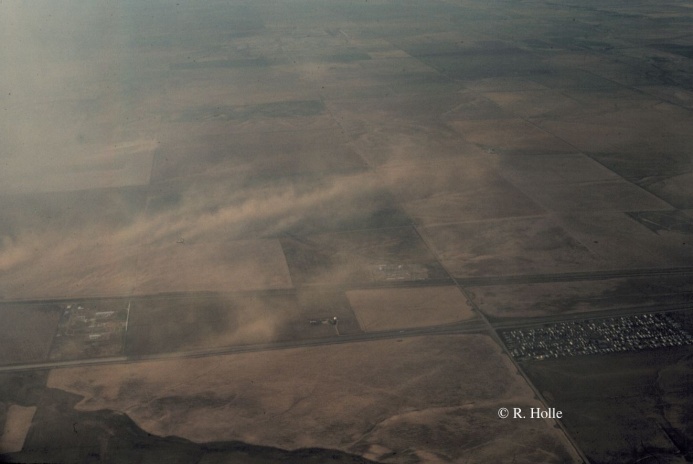
 |
|
#1
|
||||
|
||||
|
A microburst claimed a kiteboarder in Utah recently. I understand that riders sometimes see the dust clouds from these violent weather phenomena kickup and act to depower their kites to try to avoid the high winds moving towards them. The kiteboarder in Utah wasn't aware of the microburst as might happen in other cases if the rider simply isn't looking in that direction. Downbursts can cause winds to gust into the 30 to almost 170 mph range. The wind velocity that you feel will be influenced by many factors including your distance from the burst, surface terrain, etc.. The writer was almost killed by a suspected wet microburst several years ago as well. Downbursts have also caused a substantial number of airliner crashes.
Avoiding weather that generates downbursts would be a prudent step to take. If you google "the name of your country or state" and "microburst" you may well find record of past events in your area. These phenomena are very wide spread. It has been estimated that up to 5% of storms may be associated with downbursts.  1. 1. 2. 2.Which of the above two images is of tornado damage and which is of microburst damage?** See below for answer. "During strong or severe thunderstorms, a burst of intense winds often flatten buildings and knock down trees. These winds, known as ‘downbursts’, are often mistaken for tornadoes due to the severity of the damage. A downburst features air diving toward the surface, whereas a tornado is composed of rising air." From: www.usatoday.com/weather/ tg/wdnburst/wdnburst.htm  A microburst felled this THREE TO FOUR FOOT DIAMETER HARDWOOD TREE. Worried about burst just messing your kite gear up?! Think again. "Recall that a downburst is defined as strong downdraft with an outrush of damaging winds on or near the ground. Downbursts are subdivided based on their size. If the swath of damaging winds is 2.5 miles or greater in diameter, then it is termed a macroburst. If the swath is less than 2.5 miles, it is called a microburst. In general, microbursts are quick hitting events and are extremely dangerous to aviation. Microbursts are sub-classified as dry or wet microbursts, depending on how much or little rain accompanies the microburst when it reaches the ground." From: http://spotterguides.us/advanced/advanced06.htm  We know commercial jet airliners aren't up to coping with nearby microbursts. Where did the idea come from that kiteboarders could handle the effects better?! "Microbursts can occur anywhere convective weather conditions (thunderstorms, rain showers or virga) occur. Virga is rain that evaporates before it reaches the ground and is associated with a dry Microburst. Observations suggest that approximately five percent of all thunderstorms produce a microburst." "The Microburst can occur without rain ever reaching the ground as in the case of virga. The rain will evaporate and cause a cooling in the air, which causes the downdraft. Below is a diagram of a virga caused Microburst. The life span of a Microburst is around 15-20 minutes. Here is a life cycle diagram of the Microburst. From: http://www.math.unl.edu/~jfisher/NSF_96/windshear.html An example of a four photo Dry Microburst appears at the link below. This one was associated with Virga and only put out winds estimated to be 50 kts. You can see the dust blown up on the ground associated with the down flow.  CLICK HERE AND HIT SLIDESHOW From: http://www.cimms.ou.edu/~doswell/mic...Additions.html A good visual guide to severe weather appears at: http://www.abc.net.au/newcastle/stor...a_m1069538.pdf A good reference on microbursts is at: http://www.cimms.ou.edu/~doswell/mic.../Handbook.html Another reference can be found at: http://www.hprcc.unl.edu/nebraska/wind_events.html and at: http://www.ll.mit.edu/AviationWeather/wolfson.pdf ** Answer: Photo 1 is of microburst damage. Sometimes the outflow of microbursts in symmetical and linear resulting in the violent wind coming from one direction instead of several. Photo 2 is of tornado damage with a more caotic wind flow. Tornados can generate winds up to 300 mph, microbursts up to around 170 mph. The damage looks fairly similar.
__________________
FKA, Inc. transcribed by: Rick Iossi Last edited by ricki; 06-19-2008 at 02:37 PM. |
|
|